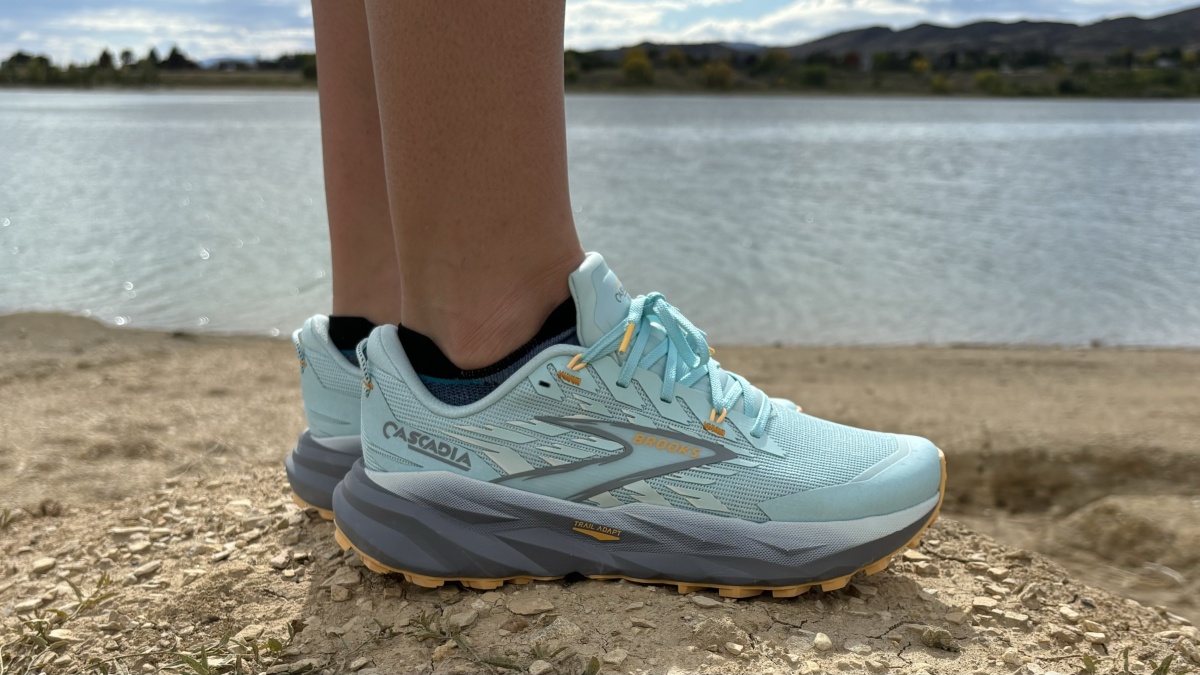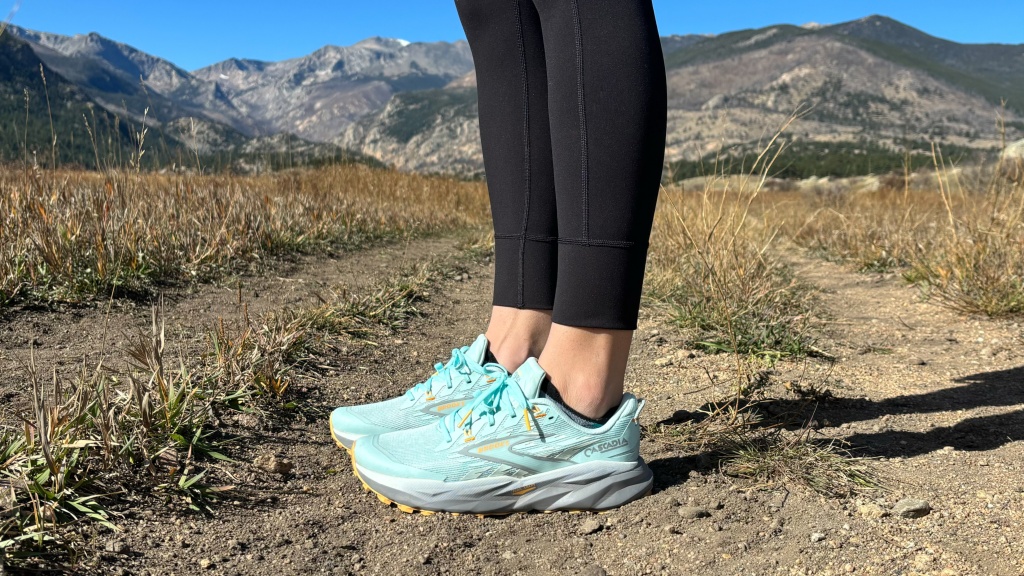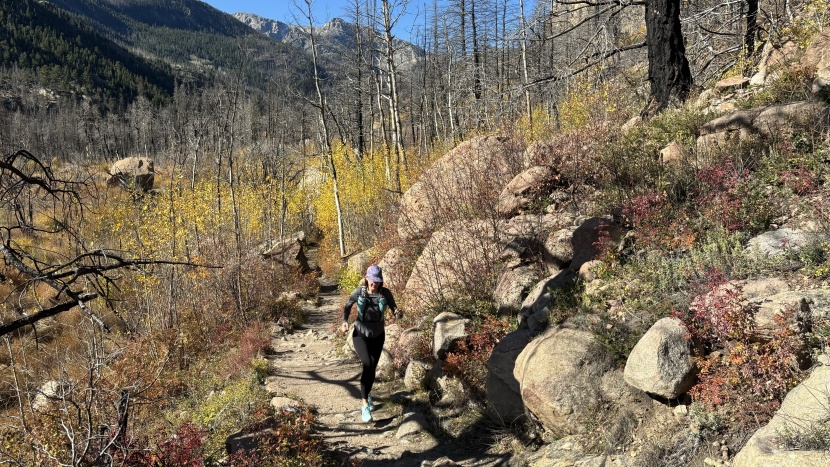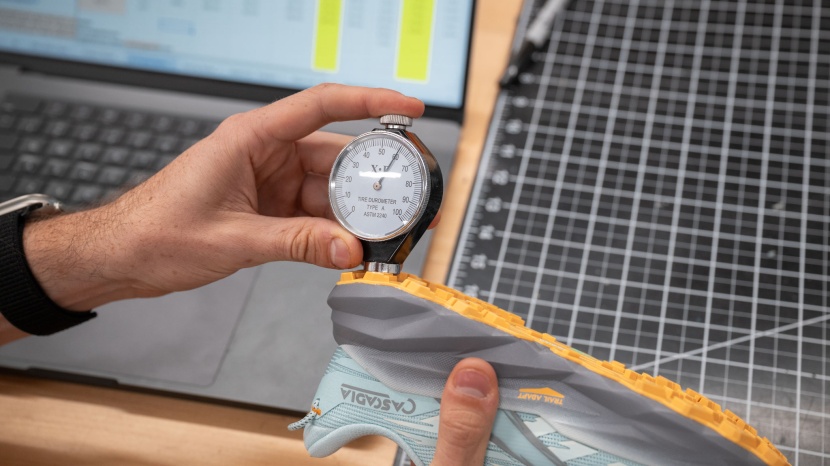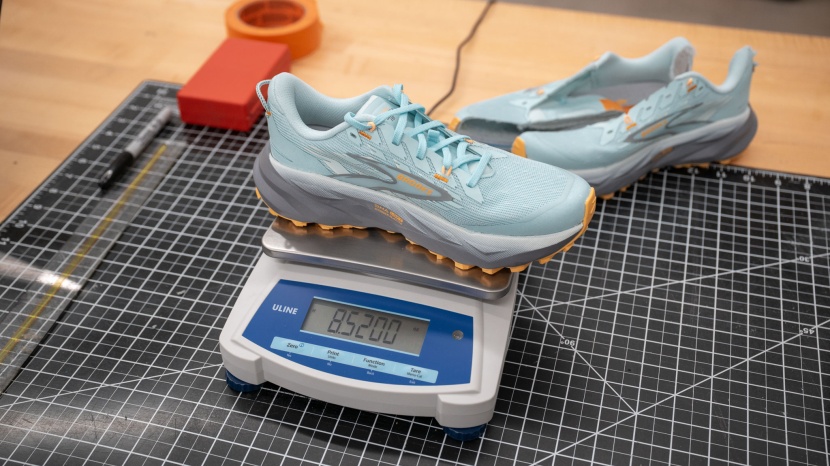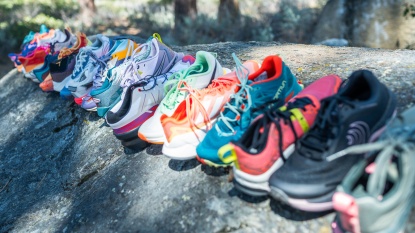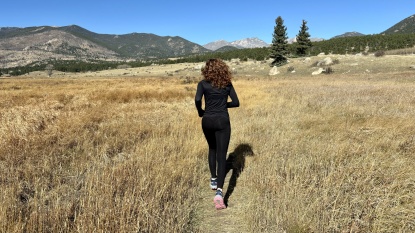
Our Verdict
Our Analysis and Test Results
We were happy wearing these on light-to-moderate trails in the Colorado Front Range and Rockies. They did well on gravel, with enough stability and traction to keep us going mile after mile. Plus, they were trustworthy on maintained trails in higher elevations too.
Comfort and Fit
The Cascadia 19 has an improved fit from the last few iterations. This version offers a roomy toe box that prevents toe scrunching, but we wouldn't consider it “wide.” Instead, you have the option to order the “wide” version if you need more wiggle room.
The shoe feels remarkably balanced and neutral, as compared to previous versions. The upper fits well, not overly tight in any direction. Meanwhile, the cushion underfoot is soft, but not too soft. It is still supportive without the feeling of falling into the cushion. Overall, these shoes are a great neutral choice for many runners who aren't after a snappy feel or pronounced rocker. If you are new to trail running, this could be a great place to start.
Stability
The Cascadia 19 has a wide base that is stable. This, paired with the structurally sound side walls and heel cup, offers a secure ride. The shoe has an 8 millimeter heel-to-toe drop (measured in our lab after cutting in half), which is on the higher side. Some might find this to be too much, though we didn't have any substantial feelings towards the drop as the shoe felt balanced during our runs.
Traction
On most trails, we found the traction offered by the Brooks Cascadia 19 to be good enough. Hardpack dirt trails were no problem, and we had plenty of grip on larger rocks. However, tricky surfaces like loose dirt, mud, and slick rock weren't so lucky. The shoe is stiff, wide, and has only two millimeter deep lugs. This combination, while having its perks, makes the shoe somewhat float on loose terrain. This also causes mud to grip the bottom of the shoe more than others we have tested. Still, for most non-tricky terrain, the shoe should keep you steady and upright.
Foot Protection
Underfoot, there isn't much to feel due to the rock plate and 34 millimeter heel stack height. The ground feel is dampened and jagged rocks stand no chance. The synthetic details along the sides also offer a little bit of protection when brushing across rocks and shrubs. Meanwhile, the soft toe cap helps prevent sore toes from the inevitable toe stub.
Weight
At 8.52 ounces per shoe, the Brooks Cascadia 19 is heavier than many trail running shoes in our lineup. Features like a rock plate and durable materials add up, even if in ounces. What does that mean for you? You might tire out quicker, especially on longer runs. However, the perks of a rock plate and durable construction might be worth it to add a few extra ounces.
Should You Buy the Brooks Cascadia 19?
If you are new to trail running, these can be a great place to start as they are balanced, cushioned, and stable. For most trails, like hardpack, dirt, and gravel, you'll have no problem with traction. The shoes are neutral and have a comfortable feel in use, though some might be deterred by the weight.
What Other Trail Running Shoes Should You Consider?
We love the Saucony Peregrine 15. It is very comfortable, stable, and can tackle just about any terrain. If you need a shoe that can handle technical terrain, the Hoka Speedgoat 6 is a very versatile choice.


